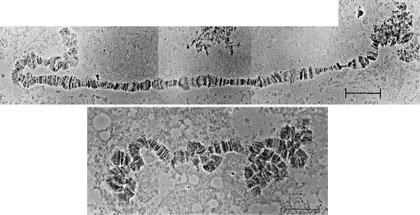 In a perfect segue from the post below, if you do go swimming in Antarctic waters the picture to the left shows one of the strange creatures you might come across - the Antarctic Icefish (Chionodracus hamatus).
In a perfect segue from the post below, if you do go swimming in Antarctic waters the picture to the left shows one of the strange creatures you might come across - the Antarctic Icefish (Chionodracus hamatus).This fish lives in waters well below freezing and only just above the freezing point of salt water (about -2C). If you went swimming in water this cold wearing a Speedo then, as Lewis Pugh discovered, your cells would freeze and consequently suffer quite serious damage. If you stayed in more than a few minutes you would die.
So how does the ice-fish survive? The answer is that it has evolved an antifreeze glycoprotein in its blood. The glycoprotein molecules bind to ice crystals and prevent them from growing to a size where they would damage the fish’s body. Although this has been known since the 1960's work continues in this area, for example this paper, One-pot synthesis of cyclic antifreeze glycopeptides from earlier this year.
Of greater relevance to today's lecture is the strange clear, almost transparent, appearance of the fish. They are sometimes referred to as 'white blooded' because their blood contains no hemoglobin. Lots of antifreeze and no hemoglobin! So how do the fish survive? Well, remember that solubility of oxygen increases as temperature decreases. So the frigid waters of the Antarctic have considerably more oxygen in solution. Furthermore the blood plasma can hold more oxygen at low temperatures (for the same reason) and the animal's metabolic rate is lower. So the icefish can deliver sufficient oxygen to their cells in the plasma without requiring hemoglobin as a specific oxygen-carrying molecule. Cool.
It is not known whether there is any link between these two phenomena. It is not actually necessary for there to be a selective advantage to the loss of hemoglobin to explain its dissapearance (remember genetic drift?) but I can't help but wonder whether there is a link. For example if the presence of hemoglobin reduces the efficiency of the antifreeze.
If you want to read more then this 2006 paper will get you into the literature: When bad things happen to good fish: the loss of hemoglobin and myoglobin expression in Antarctic icefishes.













